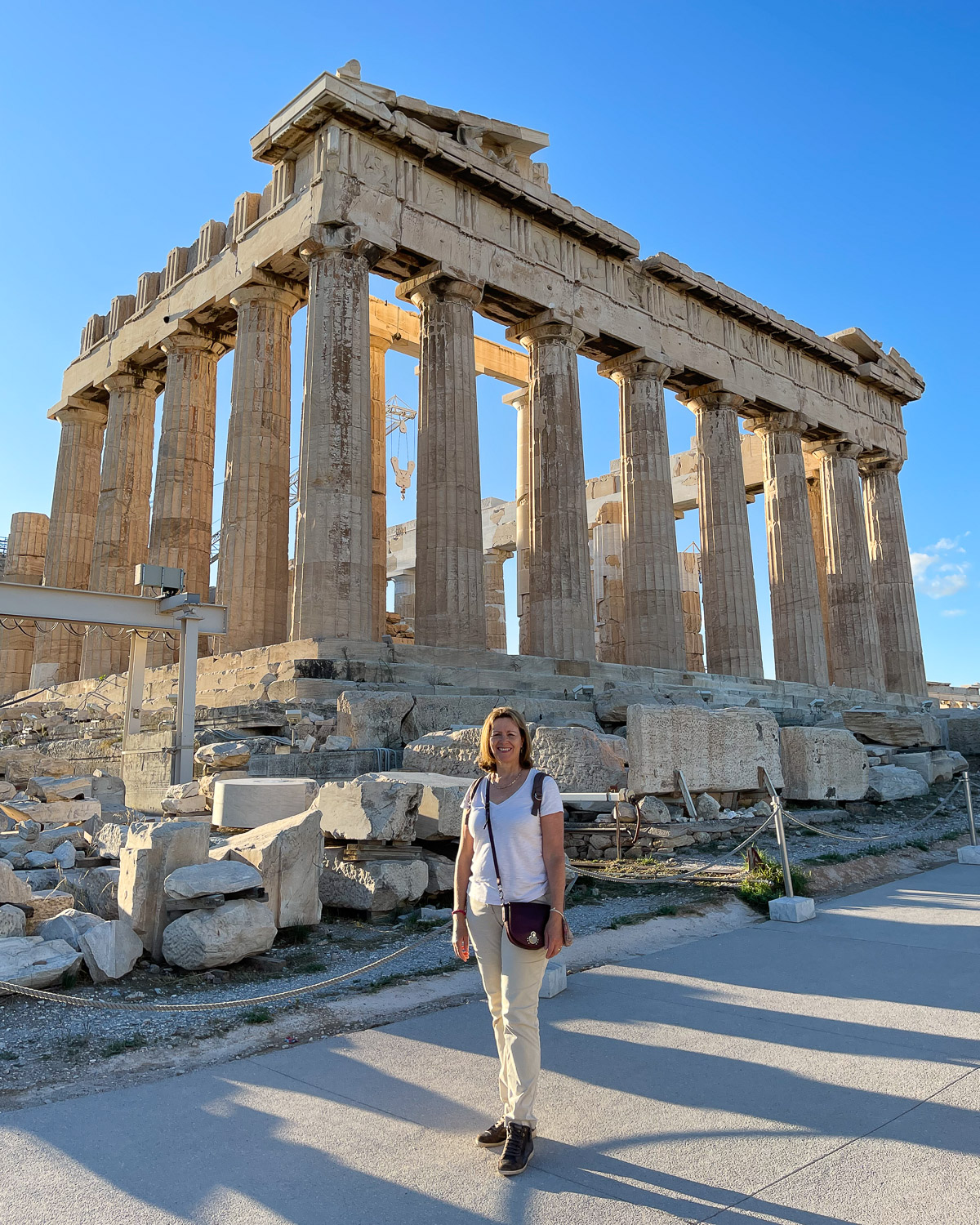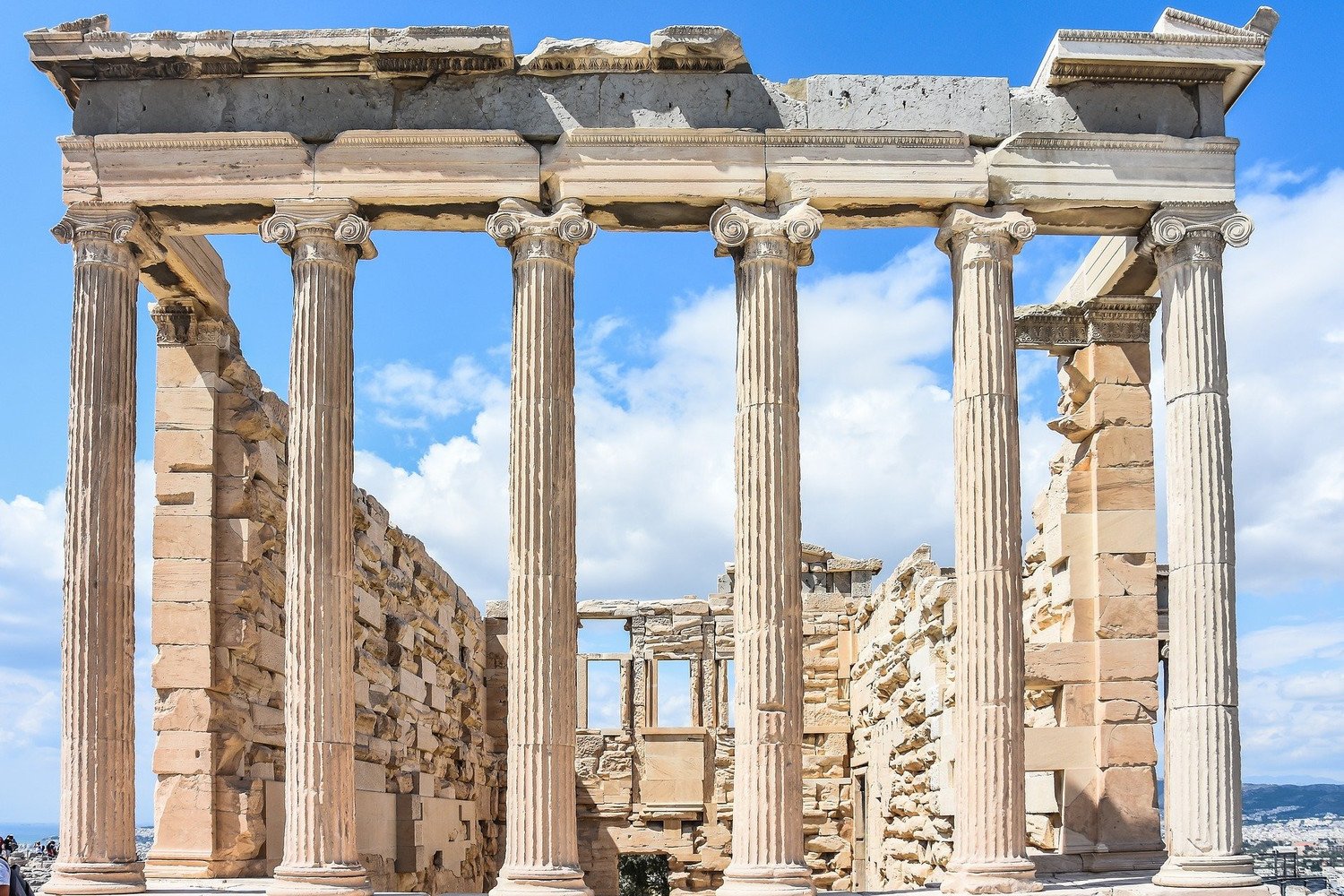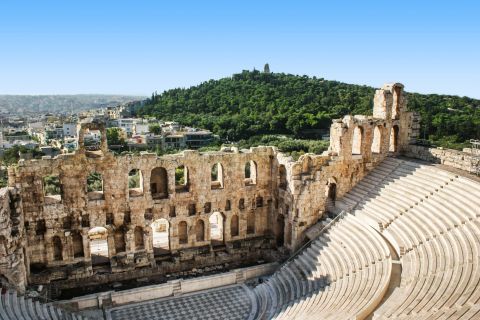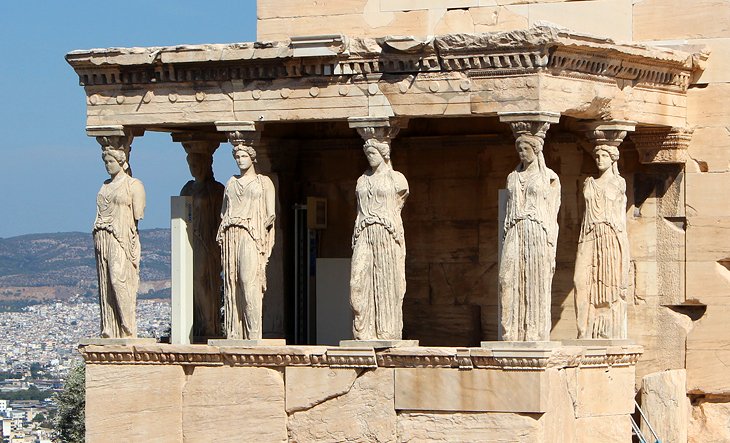Discovering the Iconic Acropolis of Athens

Are you a history enthusiast or an avid traveller? If so, exploring the Acropolis of Athens should be on your bucket list! This iconic site is a major tourist attraction and holds immense historical and cultural significance. Get ready to embark on a journey back in time as you discover the wonders of the Acropolis of Athens.
Introduction to the Acropolis of Athens
The Acropolis of Athens is a UNESCO World Heritage site on a rocky hilltop in the heart of Athens, Greece. It is home to a collection of ancient ruins, including the famous Parthenon, considered one of the greatest architectural achievements of the Classical Greek era. "Acropolis" translates to "high city" in Greek, aptly describing its elevated position.
History and significance of the Acropolis
The Acropolis has a rich history that dates back to the 5th century BC when it was transformed into a monumental complex under the leadership of the statesman Pericles. It served as the religious and cultural centre of ancient Athens, housing temples dedicated to various gods and goddesses, such as Athena, the city's patron goddess.
The most iconic structure on the Acropolis is the Parthenon, built as a temple for Athena. Its magnificent marble columns and intricate sculptures awe visitors to this day. Other notable structures include the Erechtheion, the Propylaea, and the Temple of Athena Nike.
Visiting the Acropolis offers a unique opportunity to immerse yourself in ancient Greek history and admire the architectural marvels of the past. As you wander through the ruins, you can't help but feel a sense of awe and wonder at the skill and artistry of the ancient Greeks.
So, whether you are a history buff, an architecture enthusiast, or simply someone who appreciates the beauty of the past, be sure to include a visit to the Acropolis of Athens in your travel plans. It's a journey you won't soon forget!

Exploring the Acropolis
Are you ready to immerse yourself in the rich history and breathtaking beauty of the Acropolis of Athens? This iconic ancient citadel is a must-visit destination for anyone interested in Greek history and architecture.
The Parthenon: Architectural masterpiece of the Acropolis
No visit to the Acropolis would be complete without admiring the majestic Parthenon. This ancient temple, dedicated to the goddess Athena, showcases the finest example of classical Greek architecture. Despite its damaged state, caused by centuries of wars and natural disasters, the sheer grandeur of the Parthenon is awe-inspiring. The precision in its construction and the intricate details of its friezes and columns are a testament to the skill and craftsmanship of ancient Greek architects.
The Erechtheion and its unique Caryatids
Another remarkable structure on the Acropolis is the Erechtheion. This temple stands out with its unique design and the famous Caryatids, six female statues serving as columns. Each Caryatid exudes grace and elegance and has become an iconic symbol of ancient Greek art.
Exploring the Acropolis provides a glimpse into the fascinating past of Athens and its prominence in ancient Greek civilization. Enjoy panoramic views of the city from the elevated perch of the Acropolis and marvel at the surrounding archaeological remains.
Whether you're a history enthusiast or appreciate stunning architectural wonders, visiting the Acropolis will leave you in awe. Capture the timeless beauty of this UNESCO World Heritage Site through your lens and take home unforgettable memories.
Don't forget to check the opening hours and consider visiting early or late in the afternoon to avoid the crowds and make the most of your experience. So, put on your most comfortable shoes, grab your camera, and get ready to embark on an unforgettable journey through time at the Acropolis of Athens.

The Propylaea and the Temple of Athena Nike
Exploring the iconic Acropolis of Athens is like stepping back in time. From the impressive ruins to the breathtaking views of the city below, every corner of this ancient citadel holds a story waiting to be discovered. You must not miss two notable structures: the Propylaea and the Temple of Athena Nike.
The Propylaea: Grand entrance to the Acropolis
As you approach the Acropolis, the first thing that will catch your eye is the majestic Propylaea. This monumental gateway served as the main entrance to the sacred site. Built-in the 5th century BCE, the Propylaea is a marvel of classical Greek architecture. Its elegant marble columns and intricate designs will leave you in awe. Take your time to admire the details and imagine what it must have been like to enter through these grand gates in ancient times.
The Temple of Athena Nike: Symbol of victory and strength
Perched on a platform overlooking the city, the Temple of Athena Nike stands as a testament to the prowess of the ancient Athenians. Dedicated to the goddess of victory, this small temple showcases the mastery of Ionic architecture. Its delicate columns and exquisite friezes depict scenes of battles and triumphs. It's worth noting that the original friezes are now on display in the nearby Acropolis Museum, while replicas adorn the temple.
As you venture through the Acropolis, take a moment to appreciate the significance of these two structures. The Propylaea represents the gateway to history, inviting you to explore the wonders of the ancient world. The Temple of Athena Nike reminds us of the strength and determination of the ancient Athenians. Standing in their presence, you can't help but feel inspired by their legacy.
So, don't forget to include the Propylaea and the Temple of Athena Nike in your Acropolis adventure. These architectural marvels will return you and leave a lasting impression of this incredible ancient site.

The Odeon of Herodes Atticus and the Theater of Dionysus
The Odeon of Herodes Atticus: Roman-era theatre
When you visit the historic city of Athens, one of the iconic landmarks is the Odeon of Herodes Atticus. This ancient theatre, built in the 2nd century AD, is a marvel of Roman architecture and engineering. With its stone seats and impressive stage, the Odeon was originally used for musical performances and theatrical productions. Today, it continues to host events such as concerts, operas, and ballets, attracting visitors from around the world.
The Theater of Dionysus: Birthplace of Western theatre
As you explore the Acropolis, don't miss the Theater of Dionysus. This ancient amphitheatre is known as the birthplace of Western theatre and holds great historical significance. Dating back to the 5th century BC, it was originally used for religious ceremonies and performances in honour of the Greek god Dionysus. The theatre has undergone several renovations over the centuries, but its overall structure and design have remained intact.
Visiting these two magnificent theatres will transport you back in time and give you a glimpse into the rich cultural history of ancient Athens. The Odeon of Herodes Atticus showcases the grandeur and skill of Roman architecture, while the Theater of Dionysus represents the beginnings of theatre as we know it today. Both sites are a testament to the enduring legacy of Greek and Roman civilizations.
So, don't forget to include these iconic locations in your itinerary when exploring the Acropolis of Athens. Immerse yourself in the history, marvel at the architecture, and imagine the performances that once took place in these historic theatres. It's an experience that will leave you with a deeper appreciation for this incredible city's arts and cultural heritage.

Other notable structures on the Acropolis
The Temple of Hephaestus: A well-preserved ancient Greek temple
If you're visiting the Acropolis, explore the impressive Temple of Hephaestus. Built in the 5th century BC, this well-preserved ancient Greek temple is dedicated to Hephaestus, the god of fire and metalworking. The temple's magnificent Doric architecture and intricate friezes make it a must-see attraction for history buffs and architecture enthusiasts.
Unlike the Parthenon, the Temple of Hephaestus has remained largely intact over the centuries. Its sturdy construction and strategic location, overlooking the Agora and the city of Athens, ensured its survival through wars and pillages. As you wander through its columns and explore its interior, you'll get a sense of the ancient world and the significance of this temple in Athenian religious and civic life.
The Acropolis Museum: Showcasing the Acropolis artefacts
To delve deeper into the rich history of the Acropolis, don't miss the chance to visit the Acropolis Museum. Located at the southeast slope of the Acropolis, this modern museum houses an extensive collection of artefacts found on the Acropolis and its surrounding areas.
Inside the museum, you'll find a stunning display of statues, reliefs, pottery, and other treasures dating back to the 5th century BC. The museum's design is a work of art, with glass floors revealing ancient ruins beneath and large windows offering breathtaking views of the Acropolis.
The Acropolis Museum provides valuable context to the structures and artefacts you'll encounter on the Acropolis itself. Through informative exhibits and multimedia presentations, you'll gain a deeper understanding of the Acropolis's historical, cultural, and artistic significance and enduring legacy.
Whether you're fascinated by ancient Greek architecture, interested in mythology, or drawn to the timeless beauty of the Acropolis, exploring these notable structures and visiting the Acropolis Museum will enrich your experience and leave you with lasting memories of this iconic site.

Tips for visiting the Acropolis
The best time to visit and get ticket information
If you want to fully experience the iconic Acropolis of Athens without the overwhelming crowds, it’s best to visit early in the morning. Arriving before the site opens will allow you to explore the ancient ruins in a more peaceful and serene environment. The lighting during the early morning also creates a picturesque setting for taking memorable photos.
When it comes to purchasing tickets, it’s highly recommended to buy them in advance online to avoid long queues. The tickets can be bought from the official website or various authorized resellers. It's important to note that the Acropolis Museum is included in the ticket price, so allocate enough time to visit both attractions.
How to reach the Acropolis and important visitor guidelines
To reach the Acropolis, you can take a short walk from the city centre or use public transportation. The nearest metro station, Acropoli, provides easy access to the site. Remember that there is a steep uphill climb to the entrance, so wearing comfortable shoes is highly recommended.
When visiting the Acropolis, adhering to the visitor guidelines to preserve the ancient site is important. Respectful behaviour is crucial when exploring this historic landmark, so refraining from touching the ruins and following the designated paths is essential. Remember to bring a hat, sunscreen, and water, as the site can be quite exposed to the sun.
Exploring the Acropolis is an awe-inspiring experience that allows you to step back in time and appreciate ancient Greece's artistry and architectural brilliance. By following these tips and guidelines, you can ensure a memorable and enjoyable visit to this renowned UNESCO World Heritage Site.

Recommendation for experiencing the Acropolis firsthand.
If you're planning a trip to Athens and want to make the most of your visit to the Acropolis, here are a few recommendations:
-
Arrive Early: The Acropolis can get crowded, especially during peak tourist seasons. To avoid the crowds and get the best views, arrive early in the morning when the site opens. This will allow you to explore at your own pace and take in the beauty of the ancient citadel without feeling rushed.
-
Wear Comfortable Shoes: The Acropolis is a large site with uneven terrain, so wearing comfortable shoes is essential. You'll be doing a lot of walking and climbing, so ensure you're prepared with sturdy footwear to keep your feet happy throughout your visit.
-
Bring Water and Sunscreen: Athens can get hot, especially during summer. Make sure to stay hydrated by bringing a water bottle with you. Additionally, apply sunscreen to protect your skin from the sun's rays.
-
Take Your Time: The Acropolis is not a place to rush through. Take your time to explore each monument and soak in the atmosphere. Marvel at the Parthenon, admire the Erechtheion and embrace the history surrounding you.
-
Hire a Guide: If you want to gain a deeper understanding of the history and significance of the Acropolis, consider hiring a guide. They can provide valuable insights and stories that will enhance your experience.
Remember, visiting the Acropolis is more than just checking it off your travel bucket list. It's an opportunity to connect with ancient civilizations and immerse yourself in the rich history of Athens. So, embrace the experience and create lasting memories of one of the world's most iconic landmarks.
